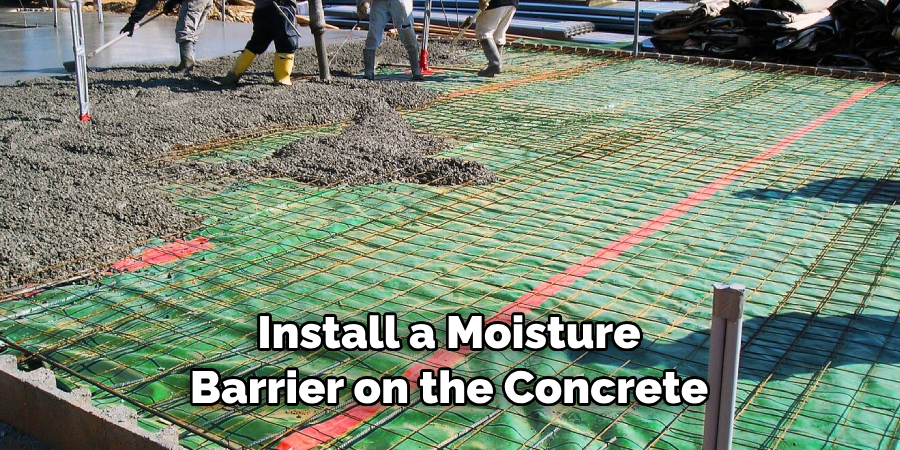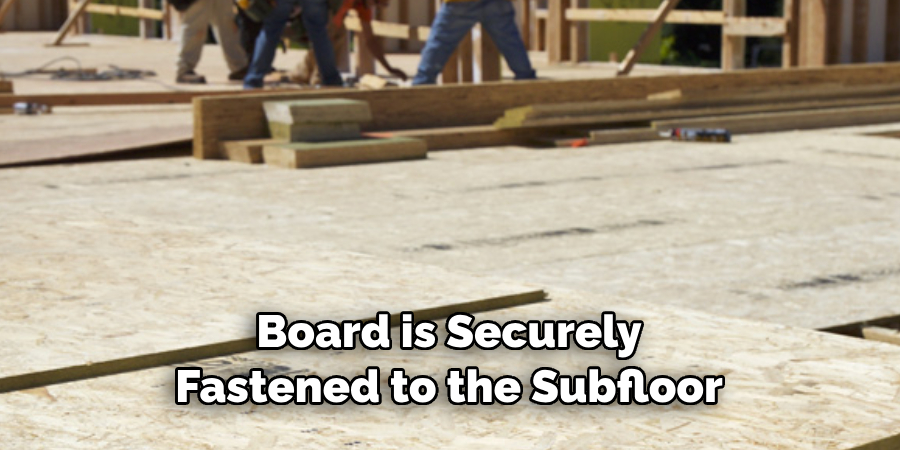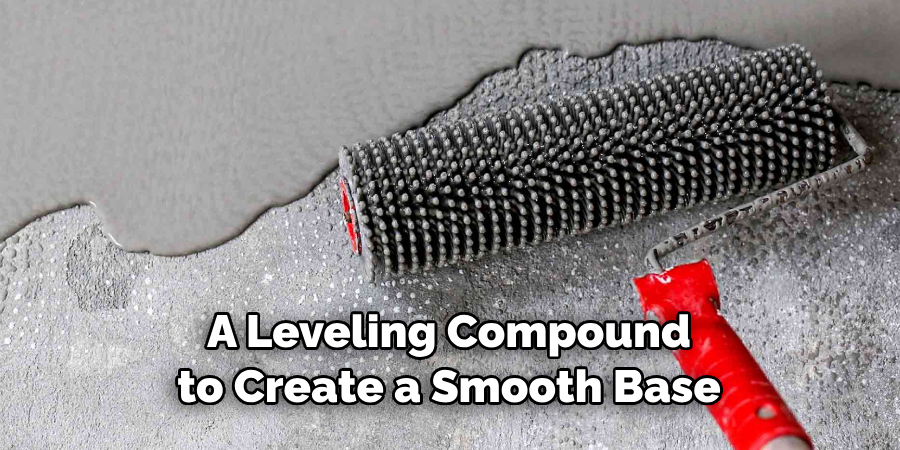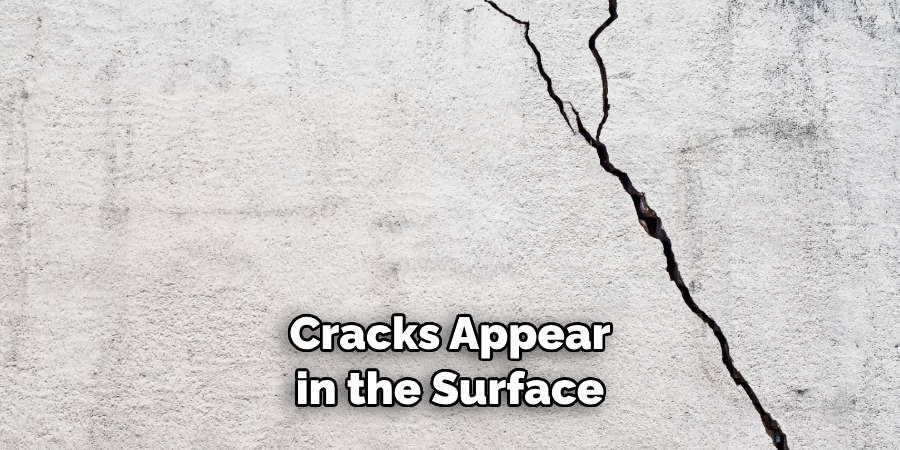Engineered hardwood is more resilient and flexible than solid hardwood, making it ideal for homes with concrete subfloors. Since engineered hardwood can be installed on any grade level of concrete, it allows you to adjust the height of your flooring without replacing the entire subfloor. It also provides stability and durability that helps protect against shifting or damage due to moisture.

Installing engineered hardwood on concrete offers many advantages compared to other flooring materials. The major benefit is that it is more moisture-resistant than other flooring types, making it ideal for installation in areas where water exposure may be a problem. In this blog post, You will learn how to install engineered hardwood on concrete.
Materials You Will Need
- Plywood
- Tape Measure
- Circular Saw
- Chalk Line
- Table Saw
- Utility Knife
- Hammer and Nails
- Pneumatic Nail Gun or Staple Gun
- Moisture Barrier
- Rubber Mallet
- Tapping Block and Pull Bar
- Engineered Hardwood Flooring
Step by Step Processes for How to Install Engineered Hardwood on Concrete
Step 1: Inspect the Engineered Hardwood
Before starting the installation, you must check that all boards are in good condition and free from imperfections. Any boards with damage or defects should be discarded and replaced.
Step 2: Prepare the Concrete Subfloor
Before installing engineered hardwood, the concrete subfloor must be completely clean, dry, level, and structurally sound. Any cracks should be filled, and any uneven spots leveled using a suitable leveling compound. It is important to install a moisture barrier on the concrete subfloor before beginning installation. This will protect the engineered hardwood from damage due to high moisture levels in the concrete.

Step 3: Install Expansion Gaps
Expansion gaps should be installed around the edges of the engineered hardwood to allow for expansion caused by temperature and humidity fluctuations. It is important to secure perimeter boards along any walls or doorways in the room where you will be installing engineered hardwood. This will ensure no gaps between the edge of the wood flooring and the wall.
Step 4: Install Floating Floor System
If you are installing a floating floor system, it is important to place noise-reducing underlayment material on top of the moisture barrier before beginning installation. This will provide additional flooring cushion and reduce noise when walking on it.
Before installing the engineered hardwood, you need to ensure it fits the size of the room. If necessary, use a saw or circular saw to cut boards to fit the room’s exact dimensions.
Step 5: Start Installing Boards
When you are ready, start installing boards toward the other from one end of the room. Make sure that each board is securely fastened to the subfloor. After all, the boards are installed, you need to install floor trim around the room’s edges to give it a finished look. This will also help protect the engineered hardwood from damage caused by foot traffic and furniture.

Step 6: Seal and Finish the Floor
The final step is to apply a sealant and finish the floor. This will help protect it from wear and tear while making it look great. If you are still determining which type of sealant to use, consult an experienced professional for advice.
Following these steps will ensure that your engineered hardwood flooring lasts many years. With the right preparation and installation techniques, you will have a beautifully engineered hardwood floor in no time.
Precautions for How to Install Engineered Hardwood on Concrete
- Wear the proper safety gear when installing engineered hardwood on a concrete surface. This includes wearing long pants, closed-toe shoes, eye protection, dust masks, and gloves.
- Make sure the concrete is clean before beginning the installation process. Sweep away any debris or dirt to create a smooth surface for the flooring material to adhere to.
- Tape off the area where you will install the hardwood to prevent any damages or accidents near and around the installation space.
- Ensure all nails, screws, and other fasteners are completely secure when installing engineered hardwood on concrete. This is to avoid any injuries caused by sharp objects coming loose during or after installation.
- Make sure the concrete is completely level before beginning the installation process. Use a leveling compound to create a smooth base if there are any visible dips or bumps.
- Measure twice and cut once when cutting engineered hardwood for installation on concrete surfaces. This will help avoid any potential issues arising from inaccurate measurements or cuts.
Following these precautions, you can safely and successfully install engineered hardwood on concrete surfaces. Take the time to ensure that all steps are completed correctly for optimal results.

Are There Any Potential Issues or Challenges to Watch Out for When Installing Engineered Hardwood on Concrete?
When installing engineered hardwood on concrete, there are a few potential issues and challenges to watch out for. The most common issue is that moisture can become trapped between the concrete and the flooring. This can cause warping, curling, gaps, buckling, or other problems that can be difficult to fix once they become serious enough. Therefore, using a moisture-blocking primer and sealer is important before laying down your engineered hardwood.
The concrete must be properly prepared to ensure optimal adhesion between the flooring surface and the concrete. This involves cleaning or etching the surface of any dirt, dust, oil, or other debris that could prevent proper adherence to the adhesive.
Furthermore, it’s important to note that some engineered hardwood floors can be sensitive to high moisture levels, so it’s important to use the appropriate adhesive and techniques when installing them on concrete.
How Can You Ensure the Engineered Hardwood Planks Are Installed Correctly and Securely?
Installing engineered hardwood planks on concrete is trickier than installing them over plywood or a wood subfloor. Therefore, taking extra care is important when getting the job done. Here are some tips for ensuring your engineered hardwood installation goes smoothly and will last for many years:
- Make sure you are using engineered hardwood made specifically for concrete installation.
- Ensure the subfloor you are working on is clean and level. Use a moisture meter to test the concrete slab before installing the planks.
- Use a self-leveling compound to fill in any gaps or imperfections if necessary.
- Choose an adhesive for concrete installation, as regular wood glue will not provide a secure bond.
- Ensure the adhesive is applied evenly and smoothly across the concrete surface before laying down the planks.
- Begin laying the planks from one corner of the room and work your way out in all directions for an even installation.
- Secure each plank with a few finishing nails to keep them in place while the adhesive sets.
- Allow 24 to 48 hours for the adhesive to dry completely before walking on or placing furniture over it.
These steps will ensure your engineered hardwood planks are installed securely and correctly on a concrete subfloor. This will help ensure your installation lasts many years and looks beautiful in your home.
Are There Any Maintenance Tips or Precautions to Follow Once the Engineered Hardwood is Installed on Concrete?
Once the engineered hardwood is installed on concrete, it is important to consider a few maintenance tips and precautions. Firstly, install felt or cork pads beneath furniture legs to protect the surface from potential scratches. Secondly, avoid using harsh chemical cleaners as they may damage the finish of your flooring. Instead, utilize a mild detergent and warm water or a specialized hardwood floor cleaner.
Additionally, it is important to vacuum or sweep your floors regularly to remove dirt and debris. Periodically check for any signs of moisture seeping up from the concrete, which can cause warping or buckling in the wood. Finally, inspect regularly for loose boards and have them re-secured as needed. Following these tips and taking preventive measures can help you ensure that your engineered hardwood floor on concrete will look beautiful for years.
How Can You Minimize the Risk of Damage to Your Engineered Hardwood Flooring During Installation on Concrete?
When installing engineered hardwood flooring on concrete, a few tips and tricks can help minimize the risk of damage to your floors during installation. The first step is to ensure the concrete surface you plan to install is completely level and undamaged.
If any changes from its original state have occurred or cracks appear in the surface, you should fill them with a concrete patching compound before installing the floor.
The subfloor below your engineered hardwood should be leveled, too. Any unevenness or dips in the subfloor can create an unstable surface for the engineered hardwood, which could cause it to become damaged over time. If any changes need to be made to level the subfloor, use a self-leveling compound before installing the engineered hardwood.
Another important factor to consider is moisture. Concrete can be very vulnerable to water damage, so you’ll need to make sure there’s no existing moisture on the concrete surface before installation.

Conclusion
In conclusion, installing engineered hardwood on concrete is a process that requires some knowledge and planning. It’s best to start by preparing the slab, checking for moisture issues, and weighing your options regarding underlayment.
From there, you should acclimate the planks according to manufacturer instructions and ensure all materials used are compatible before beginning installation.
Once this has all been done, the engineered hardwood can be installed with either a floating or glue-down method.
I hope reading this post has helped you learn how to install engineered hardwood on concrete. Make sure the safety precautions are carried out in the order listed.
